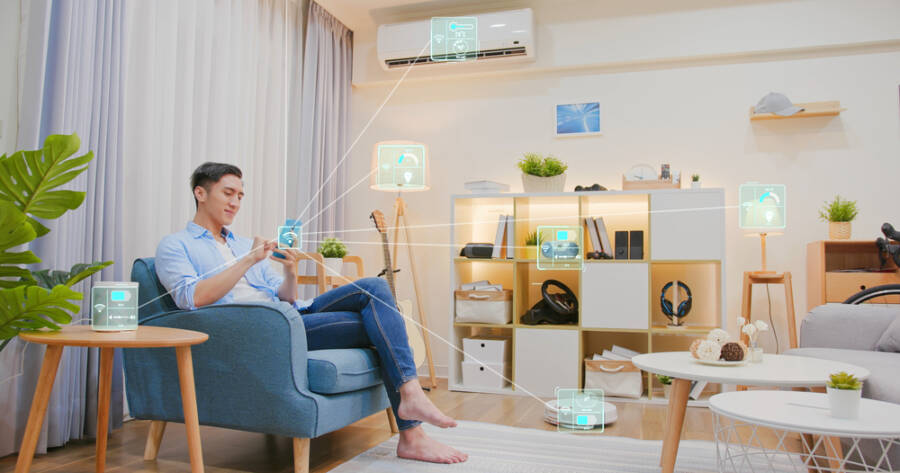The world of smart homes has seen explosive growth, with many options for connecting and controlling devices. Two of the leading players in this market are Samsung SmartThings and Google Home. Both offer impressive features for home automation, but which one stands out as the best smart hub? Explore their strengths, weaknesses, and determine which is the better choice for your smart home needs.
The Rise of Smart Hubs
Smart hubs act as central controllers for various smart devices in your home, allowing you to manage everything from lights to security cameras. These hubs integrate with other smart products, enabling automation, voice control, and remote access. Samsung SmartThings and Google Home are two of the most popular smart hubs, but they take different approaches to achieving home automation.
Samsung SmartThings is known for its compatibility with a wide range of devices and platforms. Google Home, on the other hand, focuses heavily on integrating with Google’s ecosystem, providing a seamless experience for users who rely on Google products. Understanding their individual strengths and how they align with your needs can help determine which one is right for you.
Samsung SmartThings: Flexibility and Compatibility
One of the most appealing features of Samsung SmartThings is its versatility. It supports a wide variety of third-party devices, including those from other manufacturers. Whether you have smart lights, thermostats, or security cameras, SmartThings is capable of integrating with many different products, making it a great choice for users who have a mix of devices from various brands.
The SmartThings app allows users to create customized automation routines. For example, you can set up a “Good Morning” routine that turns on the lights, adjusts the thermostat, and starts your coffee machine as soon as you wake up. It’s this kind of flexibility that makes SmartThings stand out. Additionally, SmartThings offers support for Zigbee and Z-Wave, two popular protocols for smart devices, further broadening its compatibility.
However, SmartThings is not without its drawbacks. Some users find the interface to be a bit complicated, especially when managing multiple devices. Additionally, while the hub supports a wide range of devices, the quality of integration can vary, meaning not all devices will work perfectly together.
Google Home: Seamless Integration with Google Ecosystem
Google Home is designed to offer an easy-to-use interface with seamless integration into the Google ecosystem. If you’re already using Google products like Google Nest, Chromecast, or Google Assistant, Google Home is likely the ideal smart hub for you. It’s particularly strong in voice control, allowing users to control devices with simple voice commands.
One of Google Home’s key features is its deep integration with Google Assistant, which makes controlling your home even easier. You can ask Google Assistant to play music, adjust the thermostat, or control lights, and it will respond quickly and accurately. Moreover, Google Home offers robust compatibility with popular smart devices, making it a solid choice for those who want a reliable, easy-to-use hub.
Google Home also offers multi-room audio support, meaning you can use Google Nest speakers or Chromecast-enabled devices to play music in multiple rooms at once. The ability to control entertainment systems, lights, and more with a single command enhances the overall user experience. On the downside, Google Home’s compatibility with non-Google devices may be more limited compared to Samsung SmartThings, which supports a wider variety of third-party products.
Smart Hub Comparison: Features, Performance, and Ecosystem
When comparing Samsung SmartThings and Google Home, one of the biggest differences is the ecosystem. Samsung SmartThings offers a more open approach, working with a wide variety of devices from various manufacturers. This makes it the better choice if you want to create a smart home with products from different brands. It’s perfect for users who prioritize flexibility and customization.
Google Home, on the other hand, excels in simplicity and integration. If you are already using Google products like Google Nest, Chromecast, or Google Assistant, Google Home will likely fit seamlessly into your existing setup. Google Home’s voice control and multi-room audio features also make it a strong contender for users who prioritize entertainment and ease of use.
In terms of performance, both hubs provide solid support for home automation. Samsung SmartThings is better for users looking for in-depth control over their smart home and compatibility with a variety of devices. Google Home shines in offering an intuitive, user-friendly interface with excellent voice control capabilities.
Which Smart Hub Is Right for You?
When it comes to deciding between Samsung SmartThings and Google Home, it ultimately depends on your priorities. If you’re looking for flexibility, wide device compatibility, and customization options, Samsung SmartThings might be the better fit. However, if you prefer simplicity, seamless integration with Google products, and superior voice control, Google Home is a strong choice.
Both platforms offer unique advantages, so the decision should be based on your specific needs. If you have an extensive Google ecosystem or prefer a more straightforward setup, Google Home is an excellent option. On the other hand, if you have a variety of devices from different brands or want more control over your home’s automation, Samsung SmartThings could be the perfect solution.

